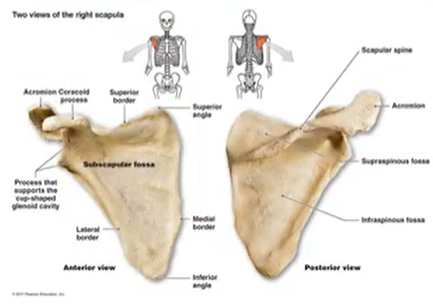LE2 (COMPANA LAB)
1/106
There's no tags or description
Looks like no tags are added yet.
Name | Mastery | Learn | Test | Matching | Spaced |
|---|
No study sessions yet.
107 Terms
Skeletal system
Body’s central framework
Consists of bones, cartilage, ligaments and tendons
Accounts for about 20% of the body weight
300
A baby body’s has about ____ bones at birth
206
These eventually fuse to form the _______ bones that adults have
Long bones, Short bones, Flat bones, Sesamoid bones, Irregular bones
Classification of bones
Long bones
femur, humerus, tibia, radius, phalanges
Short bones
carpals, tarsals
Flat bones
sternum, cranial bones (frontal, parietal), ribs, scapula
Sesamoid bones
patelia, small sesamoid bones in hands and feet
Irregular bones
vertebrae, sacrum, mandible, sphenoid
Bone is more than just a hard structure-It’s a living tissue that grows, repairs, and adopts! With blood vessels, nerves, and active bone cells, your skeleton constantly renews to keep you strong and healthy
Is bone a living tissue
Axial skeleton
Appendicular skeleton
Divisions of the skeletal system
Forms the central axis of the body
Skull, ossicles at the middle ear, vertebral column, and the thoracic cage (ribcage)
Characteristics of the axial system
to provide support and protection for the brain, the spinal cord, and the organs in the ventral body cavity
Function of axial skeletal
Skull
Vertebral column
Rib cage
3 main bone groups of the axial skeleton
bone protective cavity for the brain
Consists of 22 bones
Skull
sutures
join the junctions of the skull bone
Cranial bones
Facial bones
Auditory ossicles
Categories of skull bones
8
Amount of cranial bones
14
Amount of facial bones
6
Amount of ossicle (References can vary)
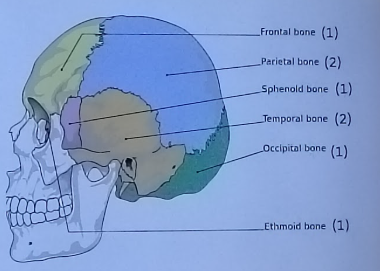
Frontal bone (1)
Parietal bone (2)
Sphenoid bone (1)
Temporal bone (2)
Occipital bone (1)
Ethmoid bone (1)
Types: 6
Units: 8
Cranial bones w/ how many types and units
Fontanelle
spots on an infant’s head where the bony plates that make up the skull have not yet come together
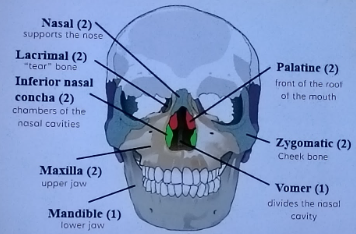
Nasal (2)
Lacrimal (2)
Inferior nasal concha (2)
Maxilla (2)
Mandible (1)
Palatine (2)
Zygomatic (2)
Vomer (1)
Types: 8
Units 14
Facial bones w/ how many types and units
No, teeth lack the ability to regenerate and heal
are teeth bones?
Ossicles
three tiny bones in middle ear collectively called
malleus (hammer) -2
incus(anvil) -2
stapes(stirrup) - 2
Types: 3
Units: 6
Auditory bones w/ how many types and units
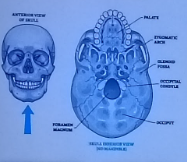
foremen magnum
large opening at the base of the skull
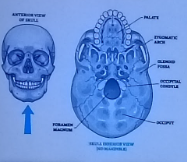
Occipital bone
Foramen magnus is located in the
passageway for the spinal cord to connect to the brain
Function of foramen magnum
surrounds and protects the spinal cord
supports the head
26 bones, 24 vertebrae, the sacrum and coccyx bones
arched curvature for strength, stability, and flexibility
Functions of the vertebral column
Cervical vertebrae (C1-C7)
Thoracic vertebrae (Th1-Th12)
Lumbar vertebrae (L1-L5)
Sacrum
Coccyx
Parts of the vertebral column

Located at neck
7 vertebrae
Small and light
Small body, larger foramen
Short and bifid (split)
supports the head, allows neck movement
Characteristics of Cervical vertebrae


Located at upper and mid-back
12 vertebrae
Medium size
Larger, body, smaller foramen
Larger and pointed
Protects the heart and lungs, supports the ribs
Characteristics of Thoracic vertebrae

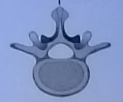
Located at the lower back
5 vertebrae
large and heavy
largest body, small foramen
thick and broad
supports body weight, allows bending
Characteristics of lumbar vertebrae
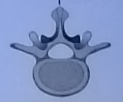
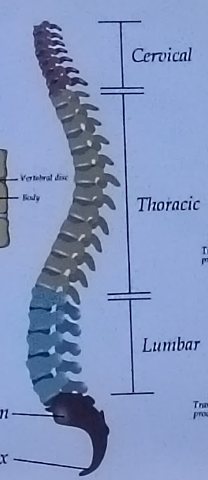
Cervical, Thoracic, Lumbar
Part of the vertebrae
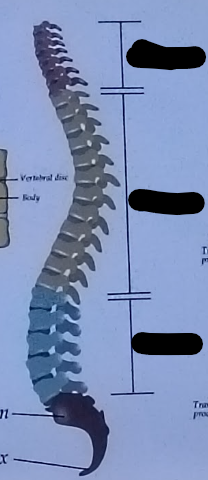
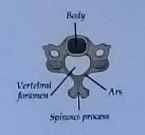
Body, vertebral foramen, ars/lamina, spinous process
Cervical vertebrae parts
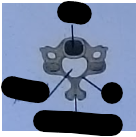
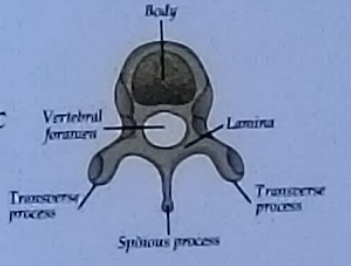
Body, vertebral foramen, lamina, transverse process, spinous process
Thoracic vertebrae parts
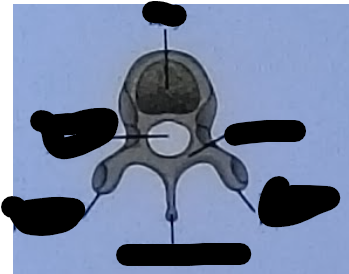
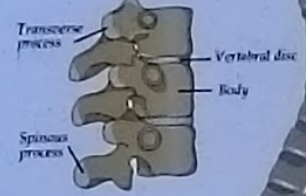
Transverse process, spinous process, vertebral disc, body, lamina
Thoracic vertebrae parts
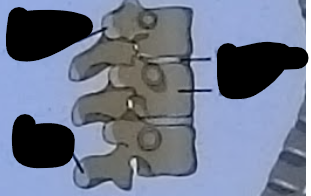
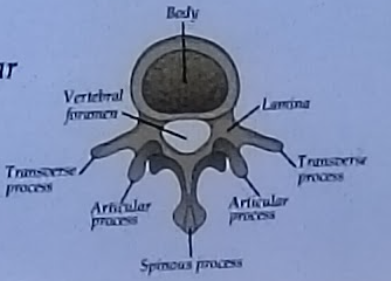
Body, vertebral column, transverse process, articular process, spinous process, lamina
Lumbar vertebrae parts
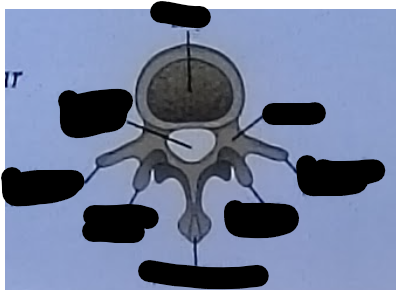
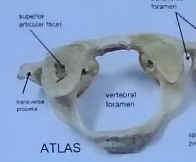
First cervical vertebrae of the vertebral column
Allows the “yes” motion of the head
named after the titan atlas
Characteristics of atlas vertebrae
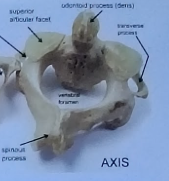
Second cervical vertebrae of the vertebral column
Allows “no” motion of the head
Characteristics of axis vertebrae
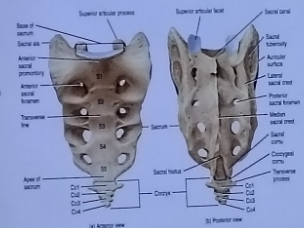
Name means “sacred bone”
Ancient greek arid romans thought it as holy because it protected vital organs and was the last bone to decay after death
starts as 5 bones, fuse into one super bone during adulthood
Characteristics of sacrum
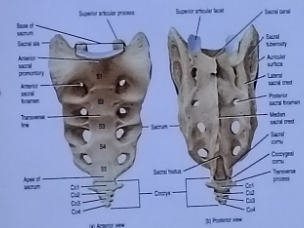
means “cuckoo” named after a birds because it looks like a bird’s beak
mini tail from evolution
from 3 to 5 small bones fused together
Coccyx
Scoliosis
is an abnormal lateral (side-to-side) curvature of the spine
Kyphosis
is an exaggerated forward curvature of the spine, leading to a hunched or rounded back
rib cage
encloses and protects the organs and thoracic cavity

12 pairs of ribs with costal cartilages
Sternum
Parts of the ribs
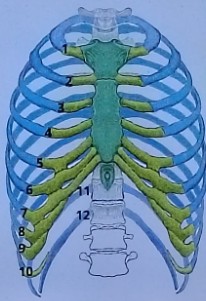
true ribs
first seven bones
connected to the sternum
false ribs
next five pairs of bones
attached to the lowest true rib (7th bone) by cartilage
floating ribs
floating than both the true ribs and the false ribs
Costal cartilage
responsible for moving the ribs according to breathing
Comprised of the upper and lower extremities, which include the shoulder girdle and pelvis
Consisting of the bones that support the appendages
There are 126 bones
Characteristics of the appendicular skeleton
Pectoral girdle
Upper limb
Pelvic girdle
Lower limb
4 main bone groups in the appendicular skeleton
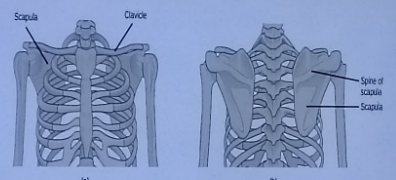
Provides the points of attachment of the upper limbs to the axial skeleton
consists of the clavicle (or collarbone) in the anterior, and the scapula (or shoulder blades) in the posterior
Characteristics of the pectoral girdle
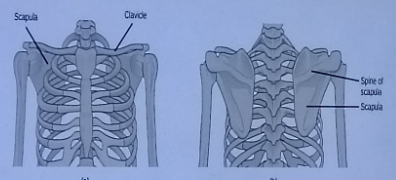
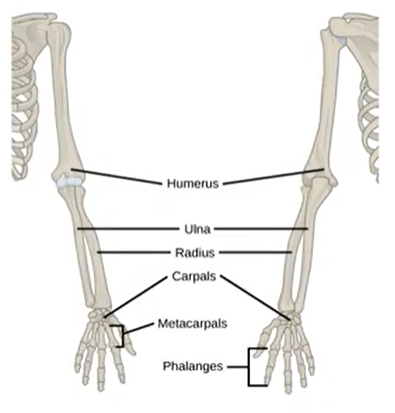
Humerus (upper arm)
radius and ulna (forearm)
carpals (wrist)
metacarpals (palm)
phalanges (fingers)
allows lifting, grabbing throwing, and fine movements
Characteristics of the upper limb
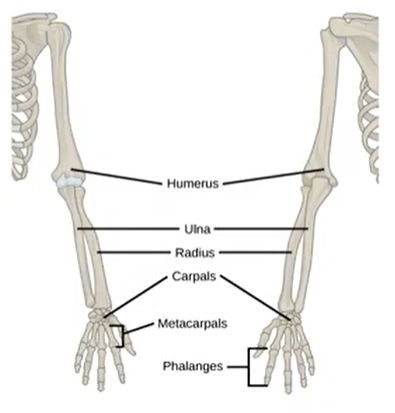
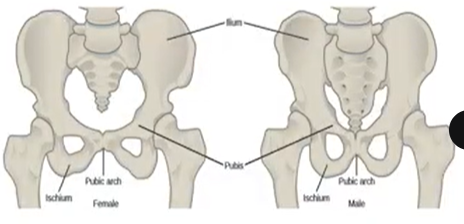
hip bone; the ilium, ischium, and pubis
supports body weight, protects pelvic organs, and connects lower limbs
Characteristics of pelvic girdle
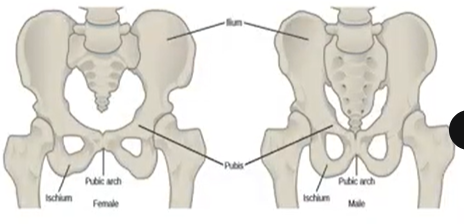
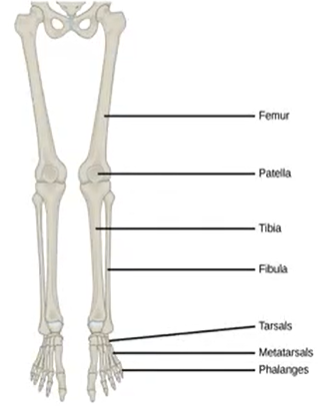
Femur (thigh) - longest and strongest bone
patella (kneecap)
tibia & fibula (lower leg)
tarsals (ankle)
metatarsals (foot)
phalanges (toes)
thicker and stronger than the bones of the upper limbs
Characteristics of lower limb
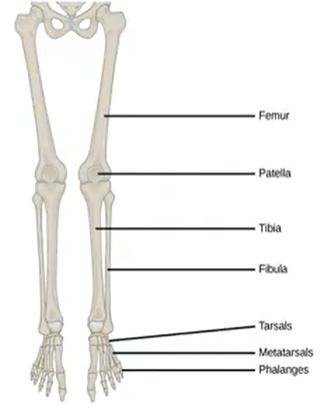
catilage (chondrichthyes) or bone (Osteichthyes)
skeleton of the fish made of either
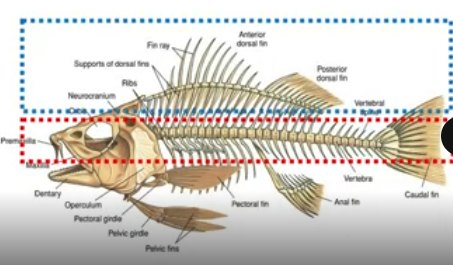
skull
Vertebrae (trunk and tail)
Ribs
Axial skeleton of fish
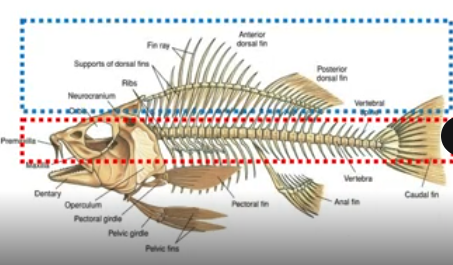
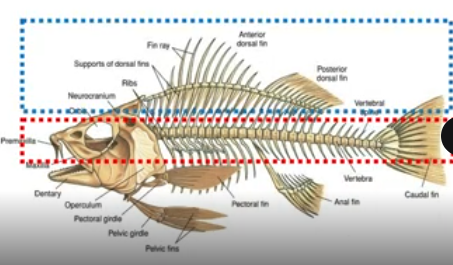
Pectoral and pelvic girdle
Bones of the appendages
Appendicular skeleton of fish
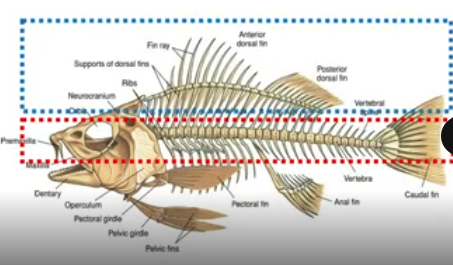
Lack true bones
Consist of fins, made of bony rays, used for propulsion, stability and steering.
adapted their fins for specific functions. pectoral find for “walking” (anglerfish), claspers for reproduction (sharks)
Differences of fishes from other vertebrates
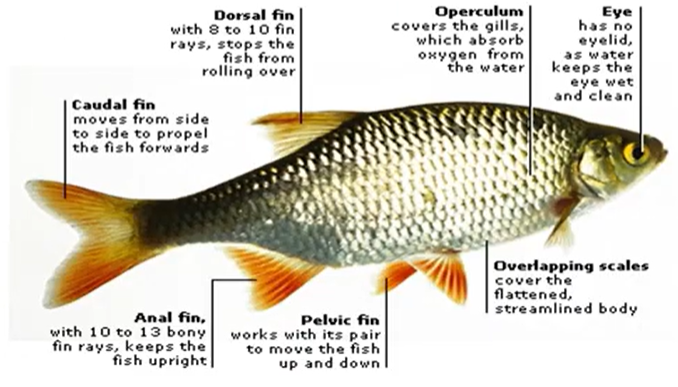
parts of fish
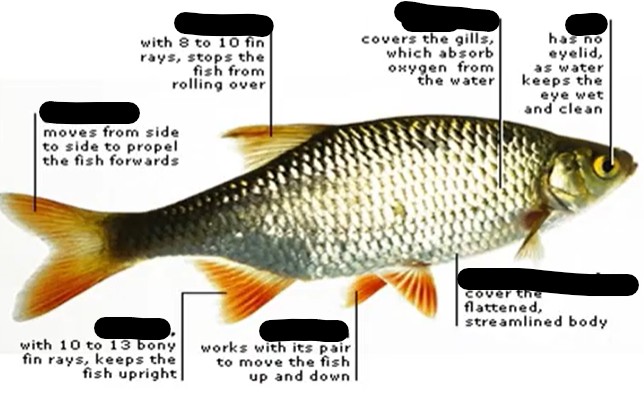
has more vertebrae than any other living animal
each group developed its own variations
ribs do not join together at the front (no sternum) - to expand to the size of any prey snake swallows
Characteristics of reptile skeleton
skull, vertebrae, and ribs, with only vestigial remnants of the limbs
characteristics of snake skeleton
Because of the quadrate bone (can move horizontally and vertically), and the ligament (stretchy ligament)
Why can snakes eat meals bigger than themselves
Birds
notable for its strength and lightness due to pneumatization (presence of air cavities)
furcula or wishbone
acts as a spring to store and release energy during wing flapping, contributing to the efficiency of flight
pygostyle
supports the tail feathers, aiding in steering and stability
fewer bones in their skeleton
many bones are fused together
What makes birds different from vertebrates
Located in the pelvic region, between lumbar and caudal vertebrae
supports the attachment of the spine
typically 1-5
fused to form the sacrum
5 sacral vertebrae fused to form the sacrum in humans
None in fishes
fused into the synsacrum in birds
Come before the caudal vertebrae in the vertebral column
Characteristics of sacral vertebrae
Located at the end of the vertebral column (tail region)
Provides support and structure for the tail
can be numerous in animals with long nails
usually not fused, but in birds, it fuses to form the pygostyle
highly reduced; 3-5 small, fused to form the coccyx
present in fishes, forms the tail
fused into the pygostyle for birds
Characteristics of caudal vertebrae
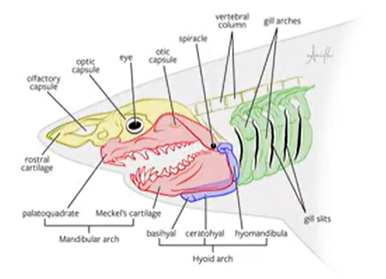
Hyal
refers to structures related to the hyoid (supporting tongue and throat)
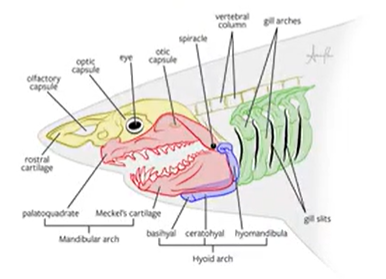
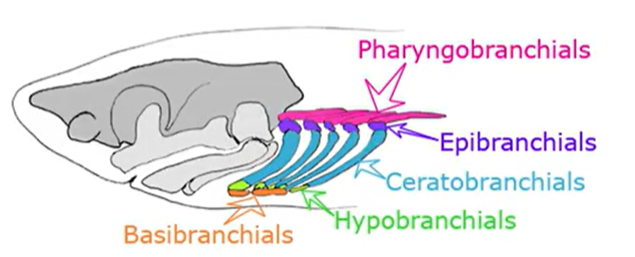
Branchial
refers to bons or arches associated with gills in fish, or their derivatives in higher vertebrates
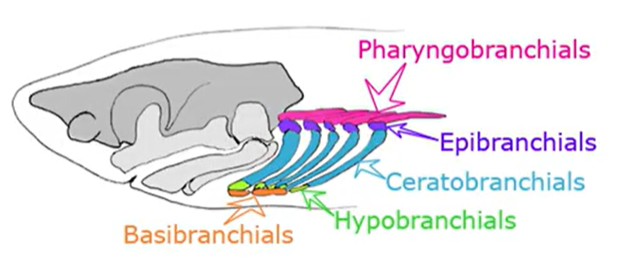
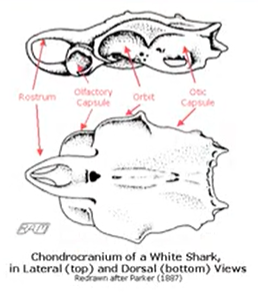
Capsule
A hollow, enclosing structure that surrounds or protects organs (cartilaginous or bony)
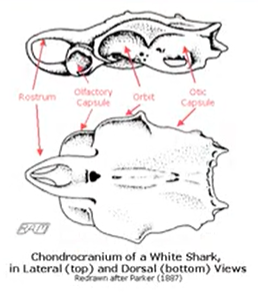
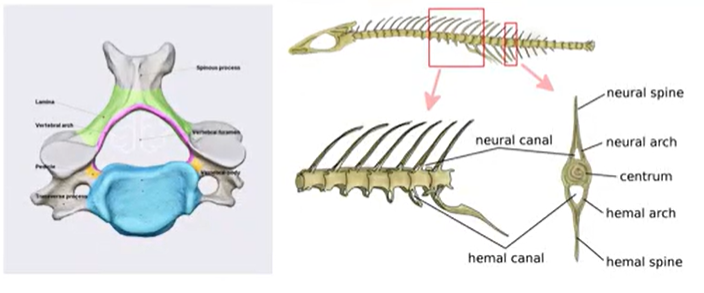
Arch
curved structure of bone or cartilage, often supporting or protecting organs
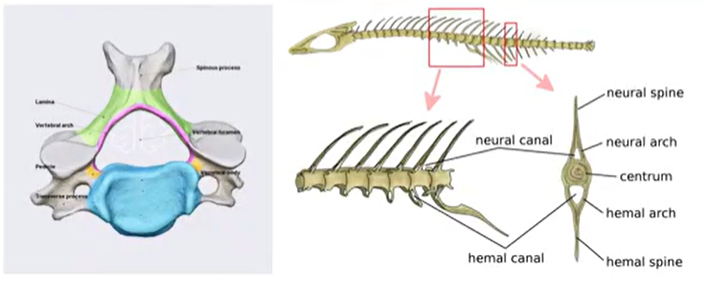
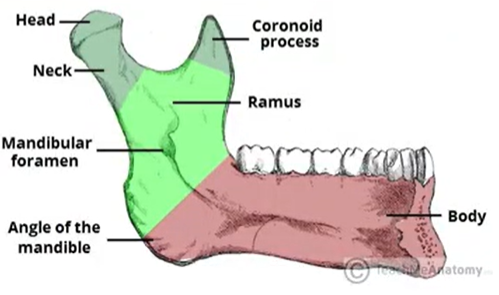
Angle
Point or region where two sides of a bone meet at an angle
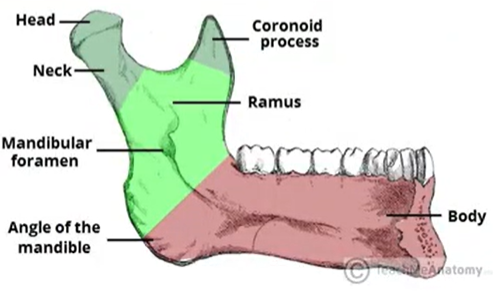
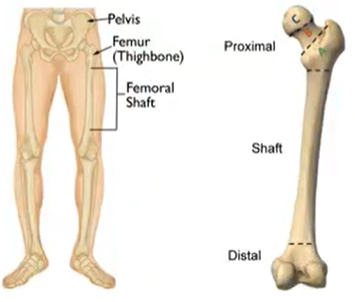
Shaft
long, cylindrical midsection of a long bone, between the ends
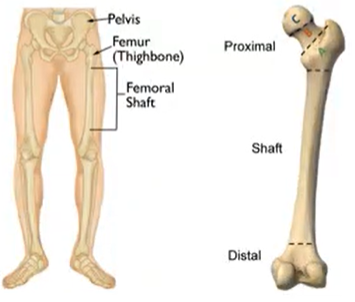
projections
raised areas or extensions of bone
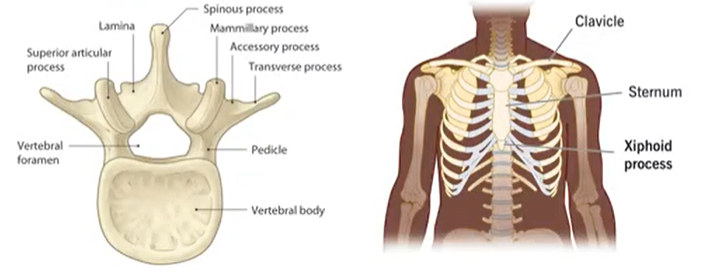
process
a prominent projection from a bone, often for muscle/ligament attachment
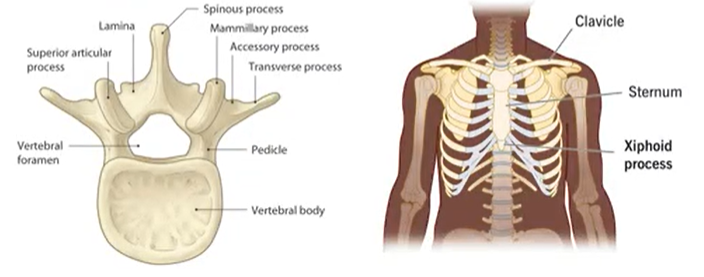
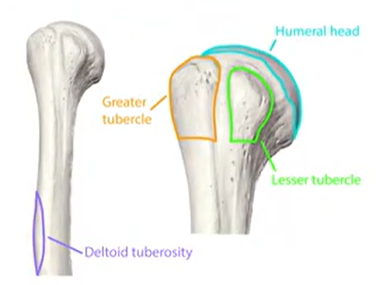
Tubercle
small, rounded, smooth or slightly rough projection. site for tendon or ligament attachment
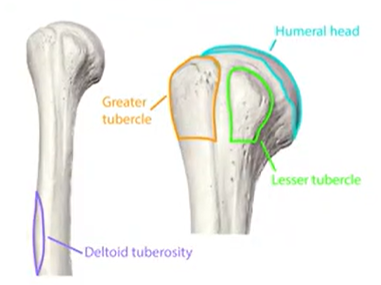
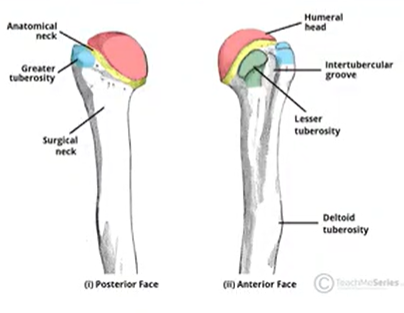
tuberosity
large, roughened projection for tendon/muscle attachment. site for tendon or ligament attachment
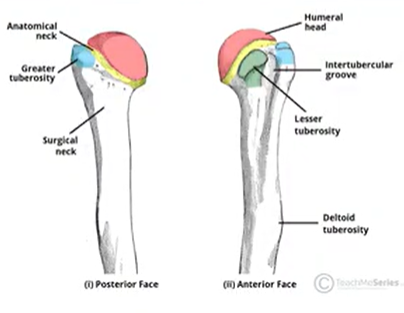
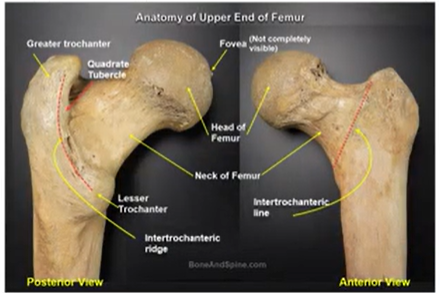
trochanter
large, blunt projection unique to femur muscle attachment. . site for major muscle attachment
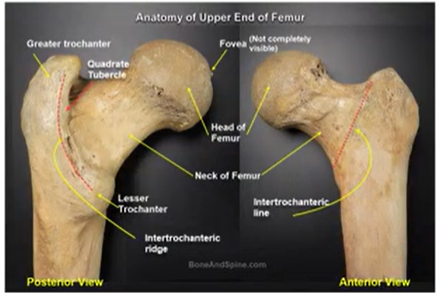
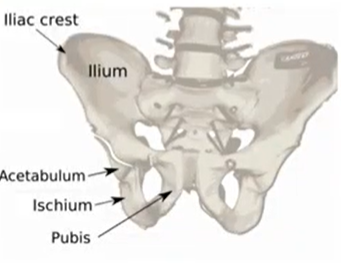
crest
narrow, prominent ridge of bone
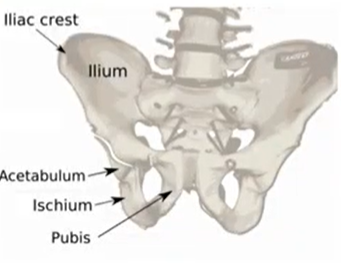
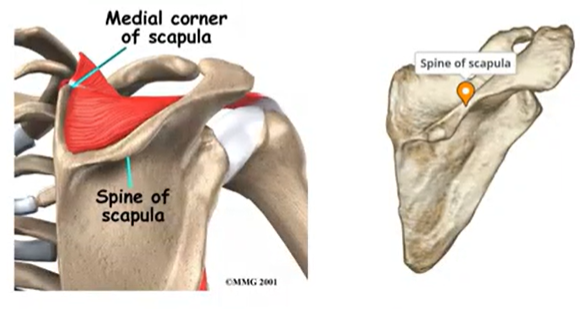
spine
sharp, slender, pointed projection
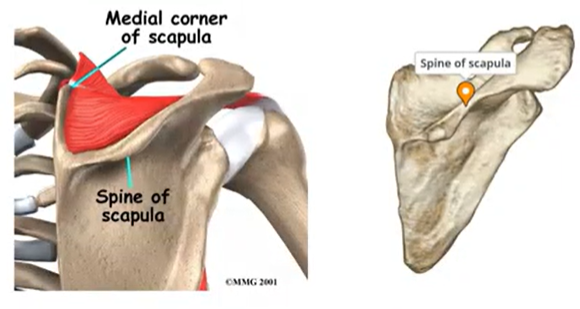
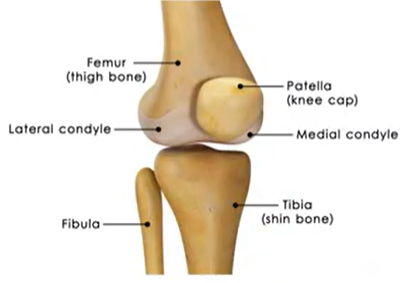
Condyle
rounded articular projection at joint surfaces
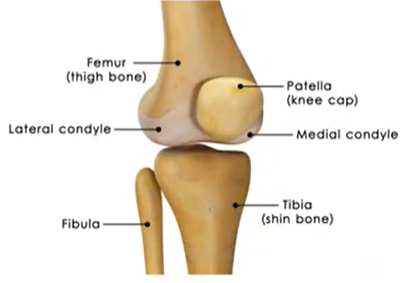
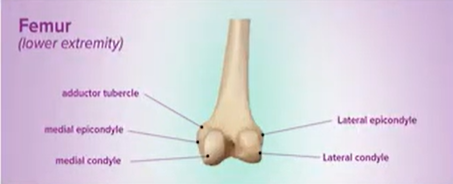
epicondyle
raised area above a condyle
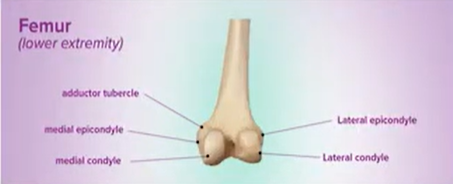
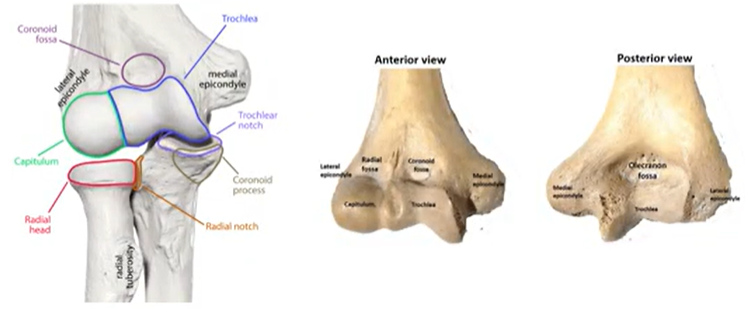
capitulum
rounded, small knob-like projection for articulation
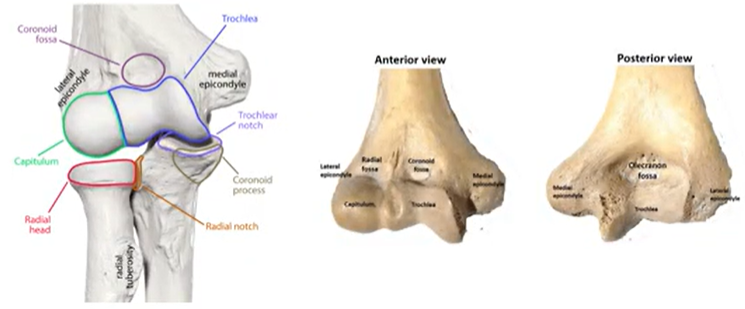
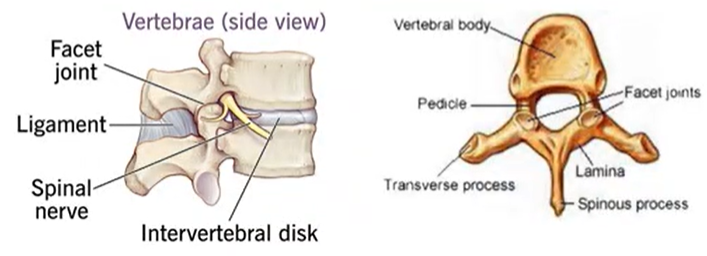
Facet
a small, flat, smooth articular surface where two bones meet
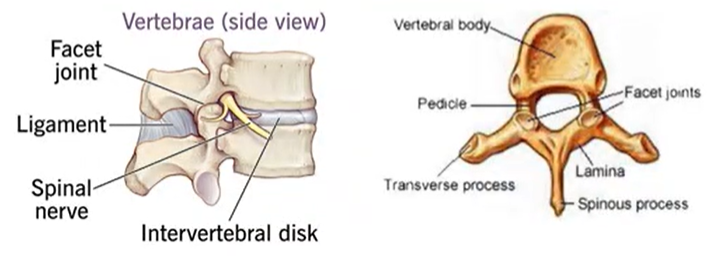
Depressions and openings
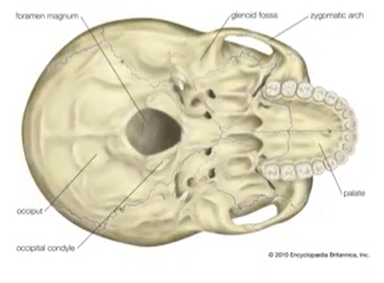
Foramen
a hole/opening in a bone for passage of nerves or blood vessels
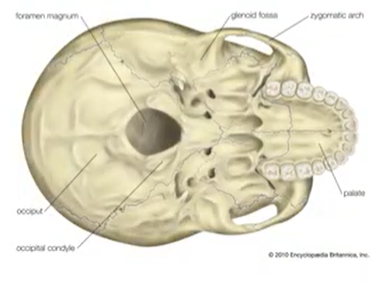
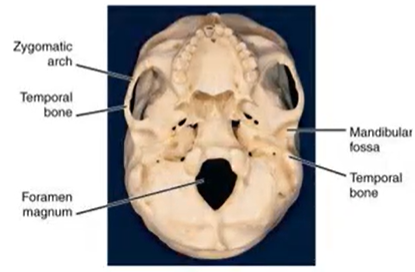
Fossa
shallow depression, often for muscle attachment or articulation
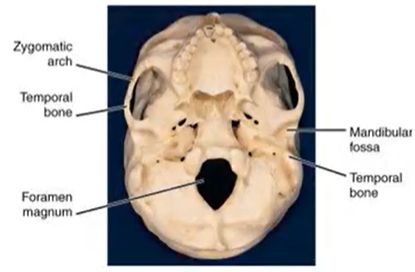
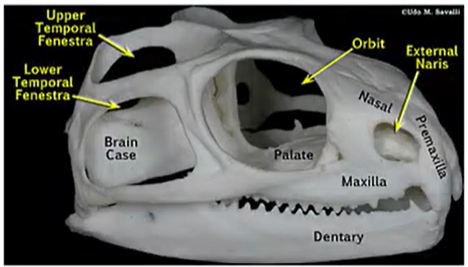
fenestra
natural opening in a bone
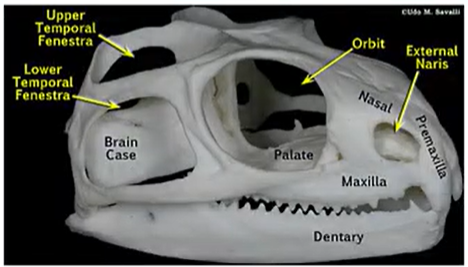
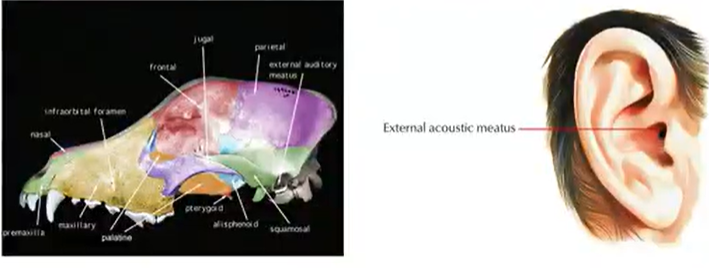
Meatus
canal-like opening through a bone
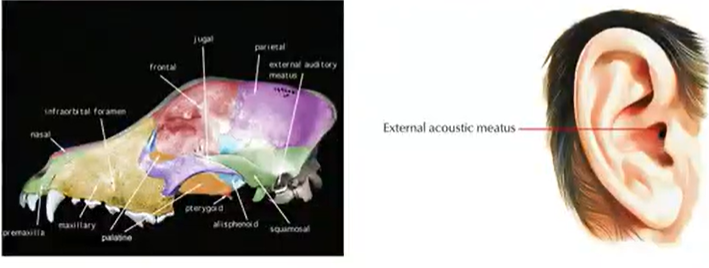
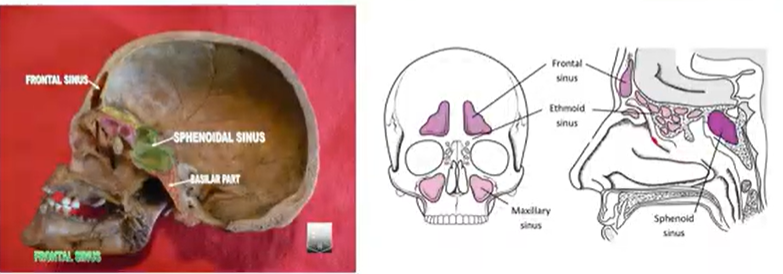
sinus
a cavity within a bone, usually air-filled and lined with mucosa
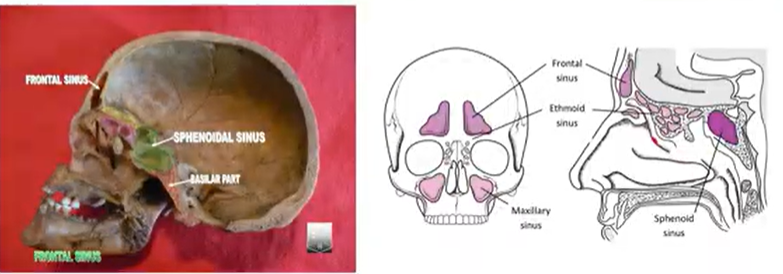
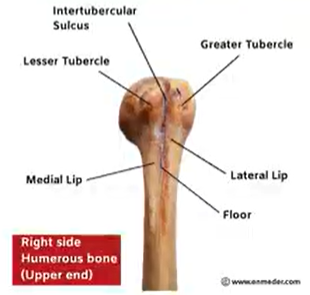
sulcus/groove
narrow trench or depression for nerves/blood vessels
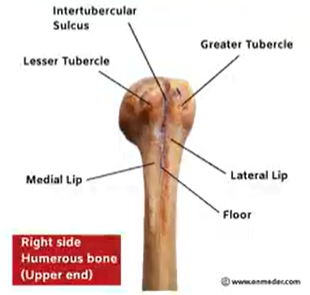
prefixes and suffixes
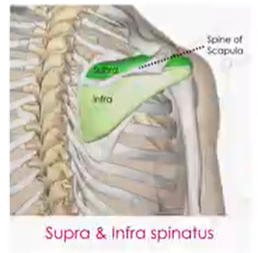
Infra-/Supra-
position relative to another structure (bellow / above)
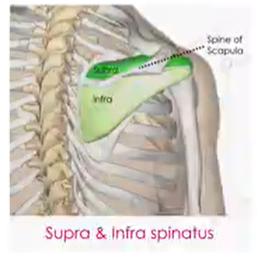
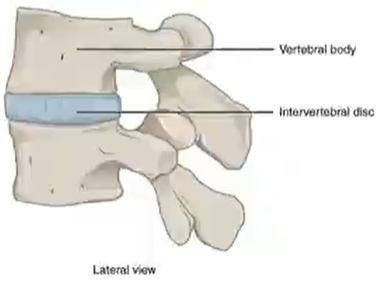
Inter
between two structures
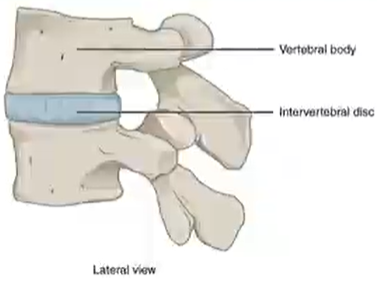
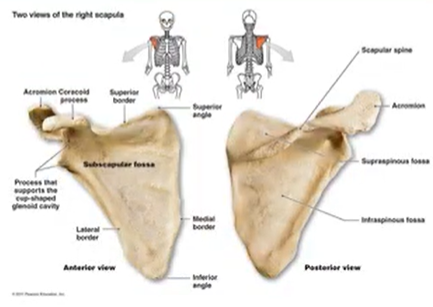
sub-
situated under or beneath
